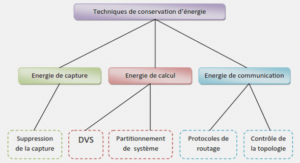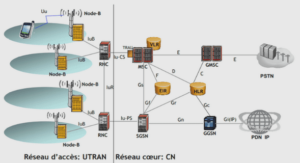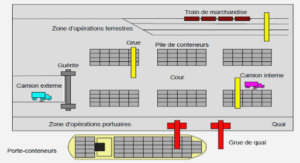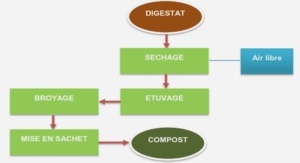Anatomy of the heart
The cardiovascular system is responsible for the blood circulation in the body. The heart is the principal organ in this system. It pumps blood around the body to distribute oxygen and nutrients and to remove carbon dioxide and waste products. Located between the lungs in the middle of the chest, the heart is divided in four chambers : the left and right atria are the upper chambers and the left and right ventricles are the lower ones . It is surrounded by a double-layered sac called the pericardium.The coronary arteries play a crucial part in delivering oxygen and nutrients to the heart. They encircle the surface of the heart forming a crown. The coronary arteries are divided in two main arteries: the right coronary artery (RCA) and the left coronary artery which bifurcates into the left anterior descending (LAD) and the circumflex artery (CX) .
The cardiac function is regulated by the cardiac cycle. One heart bump refers to one cardiac cycle. This cycle is defined by two stages. The diastole stage is when the heart’s cavities are dilated and filled with blood. It is followed by the systole, when the heart contracts and the blood is pumped out into the aorta.
Heart defects
Coronary artery disease is the most common of heart disease affecting the blood circulation. Some of the diseases affecting the heart and its arteries are:
Atherosclerosis: when the arteries are narrowed or blocked, causing stenosis. This leads to a poor blood circulation.
Tetralogy of fallot: A congenital heart defect that creates a deviation of the blood flow and a low oxygenation of the blood. This can lead to anomalies in the coronary arteries.
Kawasaki disease: A children’s disease can cause aneurysms in the coronary arteries, which are abnormal dilation of the arteries’ walls.
Heart diseases are treated with medication, surgery or non-surgical procedures. The latter is mostly preferred to surgery since they are less dangerous for young patients.
Cardiac catheterization for coronary aretries treatment
Cardiac catheterizations, such as PCI, are non-surgical procedures used for the diagnosis or treatment of coronary arteries. A catheter, which is a thin tube, is inserted through the vascular system to the location of the heart and the targeted coronary arteries . The imaging modality used for navigation guidance during percutaneous procedures is real-time two-dimensional X-ray angiography. Since blood vessels are invisible through X-rays, a radiopaque contrast agent is injected at key times through the catheter to depict coronary arteries. The X-ray angiography helps not only for navigation guidance but also for evaluating the dynamics of the coronary arteries. However, these X-rays have some limitations:
The presence of Poisson noise that can degrade the image quality (Cesarelli et al. (2013)).
The limited contrast depending on the injection of the contrast agent.
The artery may not be visible in totality but gradually in time as the contrast agent is moving with the blood flow.
The presence of stents, surgical pins and the catheter that can affect the segmentation result.
The representation of a complex 3D structure (coronary tree) projected into a 2D plane (leading to the loss of depth information).
Segmentation
Segmentation is defined as the « task of decomposing image data into meaningful structures that are relevant for a specific task » (Preim and Bartz (2007)). Indeed, segmentation depends on the nature of the structure of interest and on the imaging modality. A segmentation method is evaluated on four terms: « Robustness, Accuracy, Reproducibility and Speed » (Preim and Bartz(2007)).
An accurate, robust and repeatable segmentation of vessels from the 2D angiograms is paramount to obtain either biophysical measurement of the vessels or a good registration or reconstruction for navigation guidance. As mentioned by various research, a weak segmentation can greatly affect other results. Rivest-Henault et al. (2012) mentions that a poor 2D segmentation affects the performance of their 2D-3D coronary artery registration method. Additionally, Hipwell et al. (2003) claims that the robustness of their registration algorithm depends on the segmentation result of the vascular structure.
Two categories of basic approaches are known in image segmentation : First, edge-based approach that search for object’s borders such as Canny (1986) edge detector. Second, regionbased approach that consider the structure of interest as a homogeneous region. Edge-based approaches can bring accurate segmentation result thanks to its local-based nature. However, it can be sensitive to noise and can return discontinuous object boundaries. On the other hand, region-based techniques rely on a global approach to segment an image such as the threshold-based method of Otsu (1979), the region-growing method of Wong et al. (2009) or the water-shed segmentation of Serra (1982).
Since the late 1980 ’s, segmentation problems are formulated as the minimization of an energy function (Geman and Geman (1984) and Mumford and Shah (1989)). This function is usually divided into a data term and a smoothness term. The optimal segmentation result is the one that puts this energy to its minimum. Today, most modern segmentation approaches are based on this energy formulation (Lombaert (2012)).
|
Table des matières
INTRODUCTION
CHAPTER 1 RESEARCH PROBLEM
1.1 Problem statement
1.2 Research hypothesis
1.3 Research objectives
1.3.1 Segmentation of coronary arteries from 2D X-ray angiogram
1.3.2 Spatio-temporal segmentation (or segmentation and tracking) of coronary arteries in 2D X-ray angiogram sequences
1.3.3 Evaluation of coronary artery’s distensibility measure
CHAPTER 2 LITERATURE REVIEW
2.1 Clinical context
2.1.1 Anatomy of the heart
2.1.2 Heart defects
2.1.3 Cardiac catheterization for coronary aretries treatment
2.2 Segmentation
2.2.1 Topological features for vascular structures
2.2.2 Segmentation methods for vascular structures
2.2.2.1 Variational approaches
2.2.2.2 Graph-based approaches
2.2.3 Evaluating Segmentation : validation metrics
2.3 Tracking
2.4 Quantification of vascular structures (distensibility)
CHAPTER 3 CORONARY ARTERIES SEGMENTATION FROM 2D X-RAY ANGIOGRAPHY
3.1 Introduction
3.2 Proposed method : Vessel Walker for coronary artery segmentation
3.2.1 Preliminary works
3.2.2 Vessel Walker : segmentation method combining Random walks and vesselness filters
3.2.2.1 Semi-automatic formulation
3.2.2.2 Automatic formulation
3.3 Experimental results
3.3.1 Data Acquisition
3.3.2 Influence of parameters α, β and r
3.3.3 Influence of seed points number
3.3.4 Vessel walker compared to existing methods
3.3.5 Limitations of the method
3.4 Conclusion
CHAPTER 4 TEMPORAL SEGMENTATION OF CORONARY ARTERIES IN ANGIOGRAPHIC SEQUENCES (2D+T)
4.1 Introduction
4.2 Literature review
4.2.1 Superpixel Method
4.3 Proposed method : Temporal segmentation of CA in 2D X-ray moving sequences
4.3.1 Preliminary works
4.3.1.1 Temporal Vessel Walker
4.3.1.2 Multiscale Temporal Vessel walker (M’hiri et al.(2015))
4.3.2 Temporal Vessel Walker with superpixels
4.3.2.1 Segmentation of the first frame : Vessel Walker method using superpixels
4.3.2.2 Segmentation and tracking : Temporal Vessel Walker using superpixels
4.3.2.3 Proposed algorithm
4.4 Experimental results
4.4.1 Data Acquisition
4.4.2 Comparing the proposed method to polyline tracking
4.4.3 Extending the TVW model using superpixels : contribution of the proposed algorithm
4.4.4 Parameter’s influence
4.4.4.1 Superpixel size
4.4.4.2 Tracking parameter μ
4.4.4.3 Influence of parameters α and β
4.4.5 Performance depending on the nature of the vessel : RCA , LAD or Cx
4.5 Discussion and conclusion
CHAPTER 5 AUTOMATICALLY MEASURING VESSEL’S DISTENSIBILTY FROM 2D X-RAY SEQUENCES
5.1 Introduction
5.2 Proposed Method : Using VWT for vessel’s diameter measurement in 2D X-ray sequences
5.2.1 Temporal vessel walker method to track part of a vessel
5.2.2 Measuring vessel’s diameter
5.3 Experimental results
5.3.1 Data acquisition
5.3.2 Results on simulated coronary arteries sequence
5.3.3 Results using patients sequences
5.3.3.1 Results using aorta dataset
5.3.3.2 Results using coronary arteries dataset
5.4 Discussion and conclusion
CONCLUSION
![]() Télécharger le rapport complet
Télécharger le rapport complet






